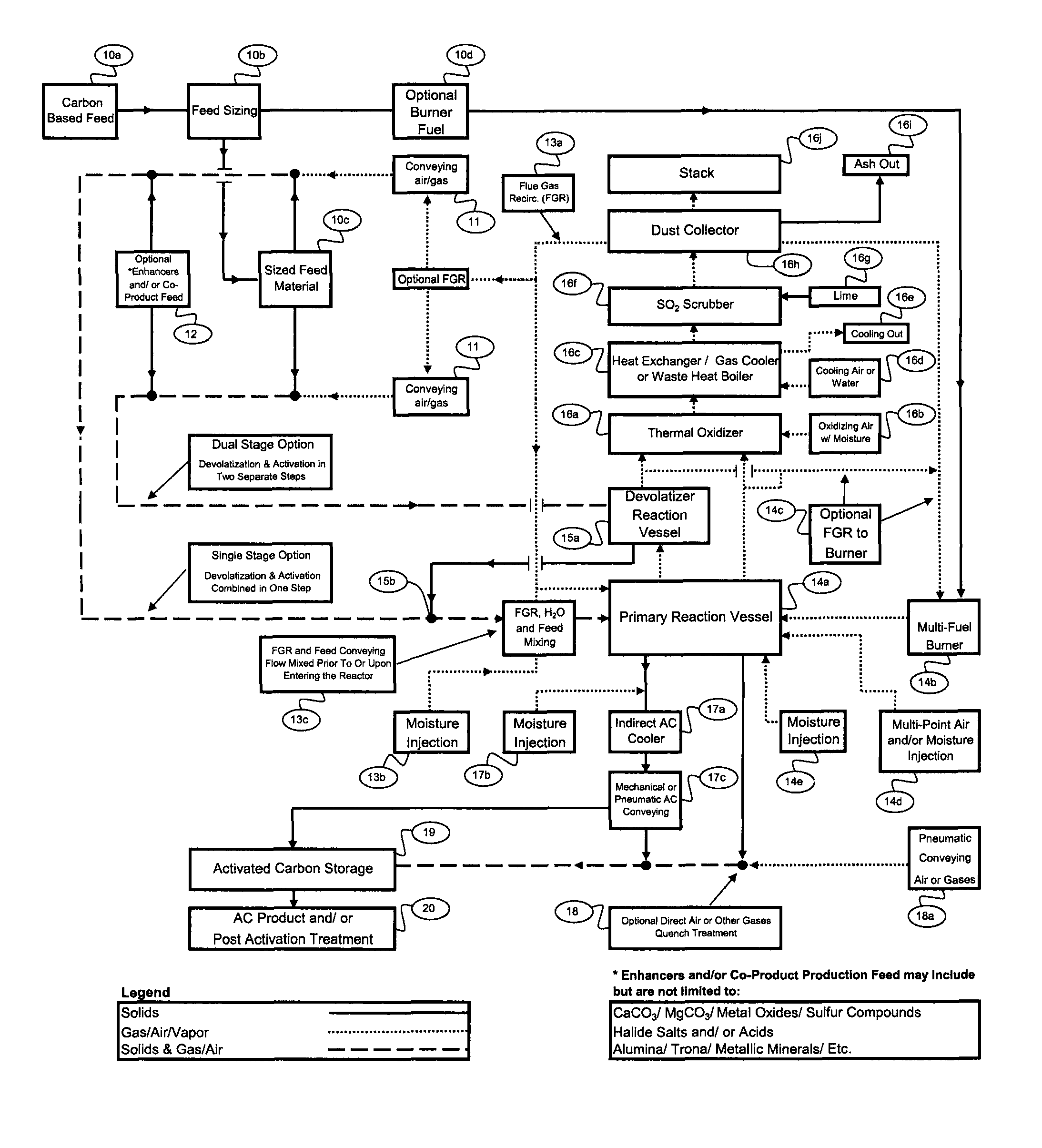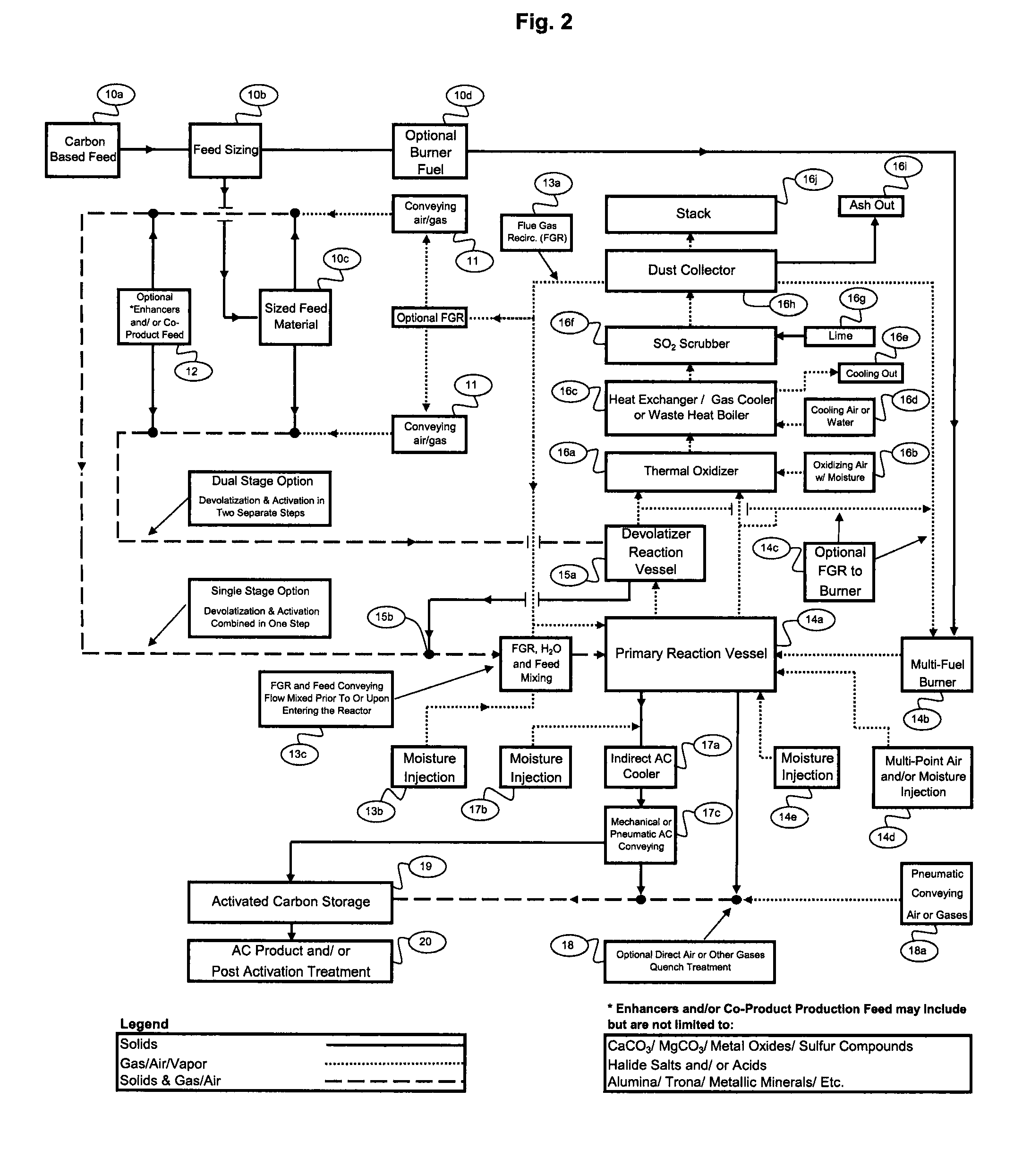Carbon heat-treatment process
a heat treatment process and carbon technology, applied in the field of activated carbon thermal production, can solve the problems of temperature spike and product quality reduction, and achieve the effects of reducing capital cost requirements, easy adjustment, and precise repeatability
- Summary
- Abstract
- Description
- Claims
- Application Information
AI Technical Summary
Benefits of technology
Problems solved by technology
Method used
Image
Examples
Embodiment Construction
[0042]Processes according to the invention can be divided into the following main categories: 1) Carbonaceous feed material (feedstock) preparation, 2) Calcination or other heat treatment, 3) Activation, 4) Post activation treatment, 5) Process gas conditioning, and 6) Optional AC enhancement practices. The calcining stage can accomplish both devolatilization and subsequent activation reactions of carbonaceous feed material in a single Reaction Vessel (Single-Stage Activated Carbon Production) or in two separate Reaction Vessels (Dual-Stage Activated Carbon Production). Each of the following sections corresponds to the Process Block Flow Diagram of FIG. 2 (with the same numbers indicating like parts / processes in FIGS. 3-4).
Carbonaceous Feed Material Preparation 10a-10d
[0043]A first embodiment of the invention can produce a combination of granular and pulverized AC utilizing a variety carbonaceous feed stock material. A blend of carbonaceous materials can also be created to tailor t...
PUM
| Property | Measurement | Unit |
|---|---|---|
| size | aaaaa | aaaaa |
| retention time | aaaaa | aaaaa |
| surface area | aaaaa | aaaaa |
Abstract
Description
Claims
Application Information
 Login to View More
Login to View More - R&D
- Intellectual Property
- Life Sciences
- Materials
- Tech Scout
- Unparalleled Data Quality
- Higher Quality Content
- 60% Fewer Hallucinations
Browse by: Latest US Patents, China's latest patents, Technical Efficacy Thesaurus, Application Domain, Technology Topic, Popular Technical Reports.
© 2025 PatSnap. All rights reserved.Legal|Privacy policy|Modern Slavery Act Transparency Statement|Sitemap|About US| Contact US: help@patsnap.com



